Table of Contents
- The history of Apple: from a startup to a global phenomenon
- Apple’s Product Development Strategy: Driving Popularity and Power
- 7 Key Strategies That You Must Learn from Apple’s Marketing
- Apple’s Marketing Strategy to develop its brand
- Apple’s Marketing Campaigns: Harnessing Popularity and Building Hype
- Apple’s Pricing and Distribution Strategies: Balancing Premium and Accessibility
- The Role of Innovation in Apple’s Popularity and Power
- The Future of Apple: Sustaining Popularity and Power in a Changing Market
- Conclusion: Key Takeaways and Lessons from Apple’s Success Strategies
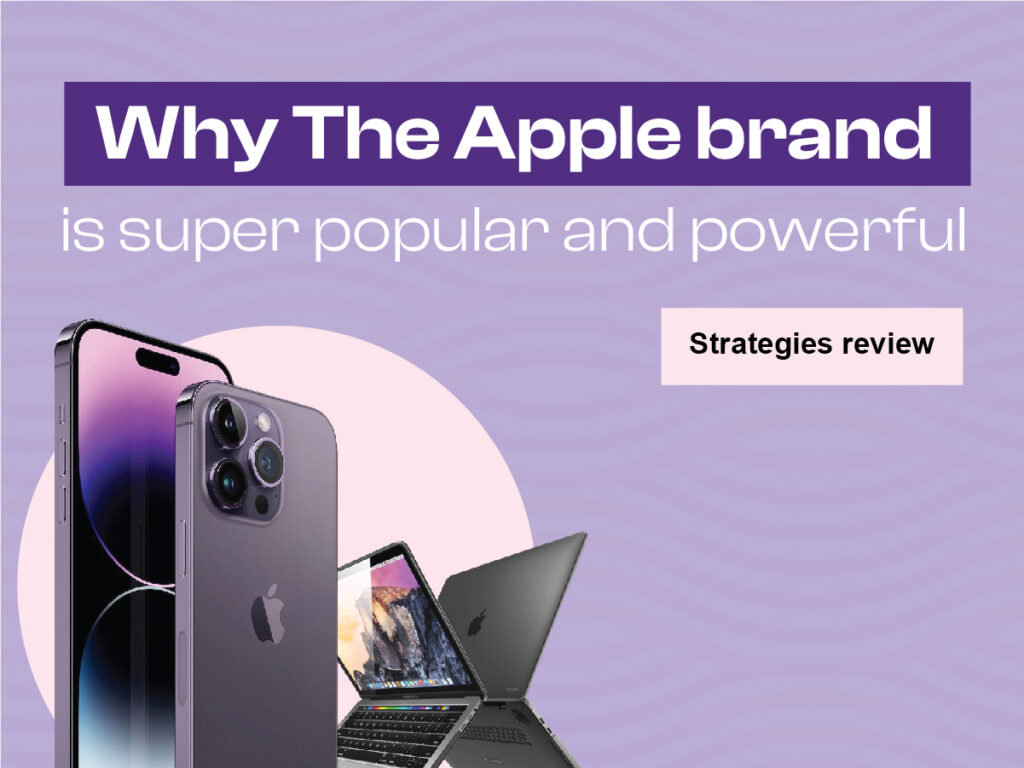
Today, when we think about technology and innovation, one of the first brands that come to mind is Apple. The company’s innovative products and powerful brand have made it one of the most recognizable names in technology, and one of the most valuable brands in the world. Apple’s success is no accident; the company has built its brand by employing smart and effective marketing strategies, using innovative marketing campaigns, and balancing the price and accessibility of its products. In this article, we will take a deep dive into why the Apple brand is so popular and powerful, and the strategies that the company has employed to get there.
The history of Apple: from a startup to a global phenomenon
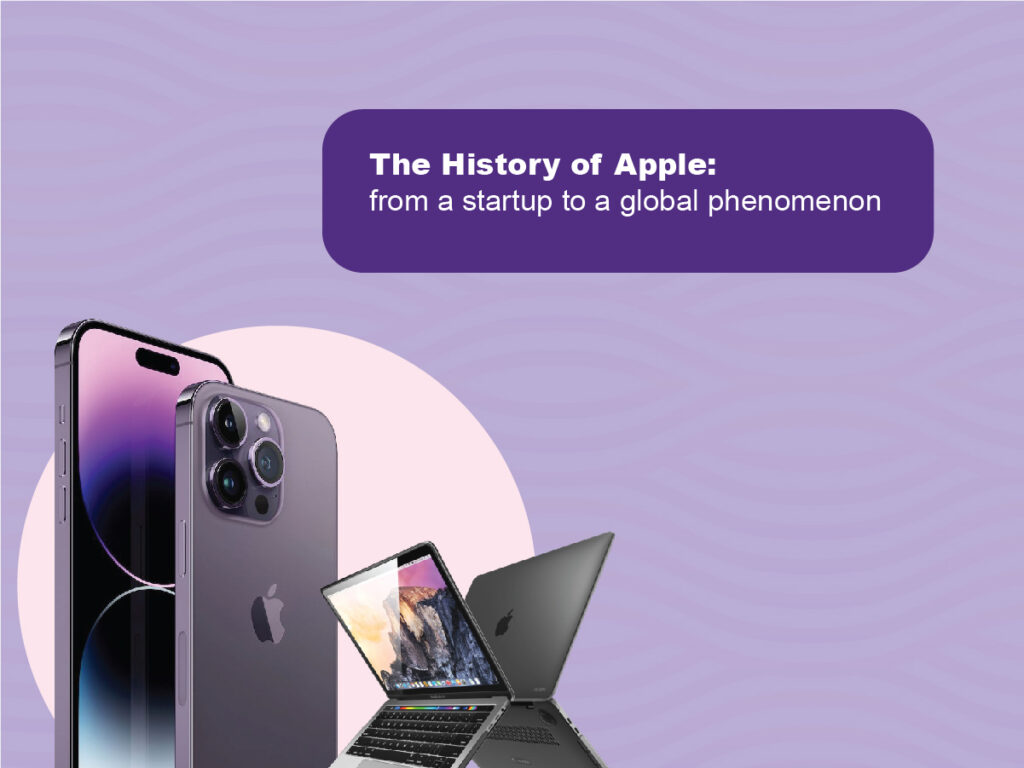
Apple Inc. was founded on April 1, 1976, by Steve Jobs, Steve Wozniak, and Ronald Wayne. Initially, the company manufactured and sold personal computers, with the first computer, the Apple I, being introduced in 1976. In 1984, two years after the launch of Apple Lisa, the first graphic-based computer, Apple released the Macintosh, a user-friendly computer for the average person. The Mac became immediately popular, and within six months, Apple’s sales had reached a record $1 billion.
Over the years, Apple has introduced an array of products, including the iPod (2001), which revolutionized the music industry, the iPhone (2007), which transformed the smartphone market, the iPad (2010), which created the tablet category, and the Apple Watch (2015), which has quickly become the best-selling wearable.
Apple’s success can be attributed to several factors. Firstly, it has always been at the forefront of innovation, creating products that have not only been technologically advanced but also intuitive and user-friendly. Secondly, the company has been renowned for its design aesthetics, minimalism and simplicity, making its products sleek and elegant. Lastly, Apple has been excellent at marketing its products in a way no one else has.
Apple Product Development Strategy: Driving Popularity and Power
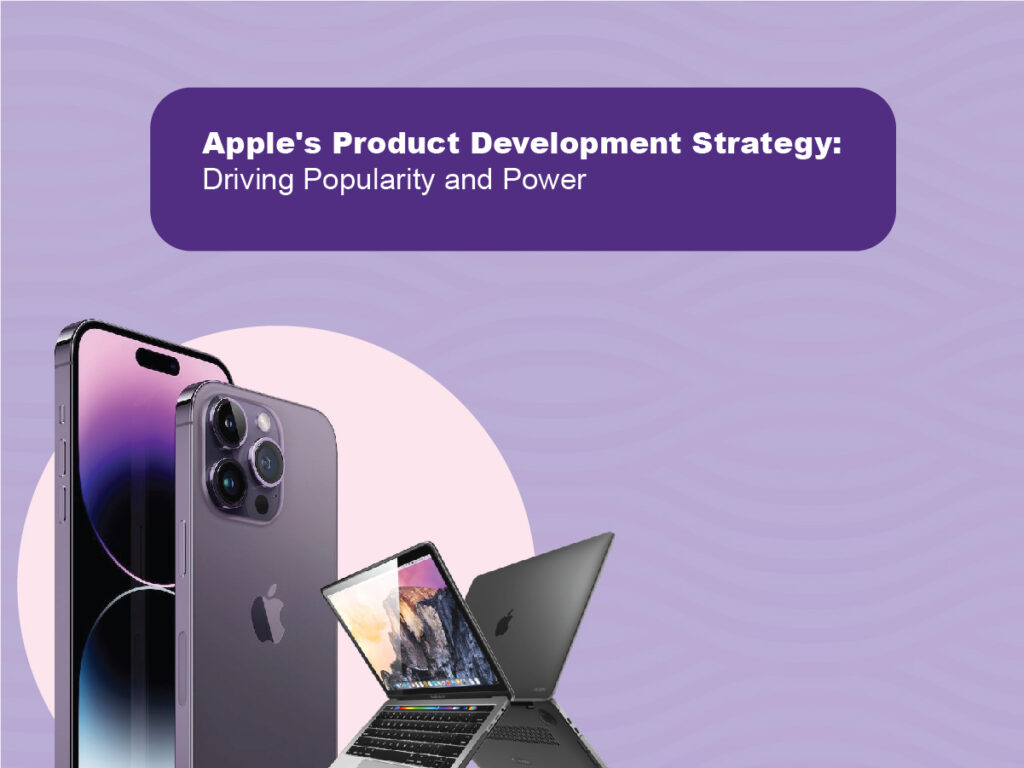
Apple’s product development strategy is perhaps one of its biggest strengths. The company has a highly efficient process through which they design, develop, manufacture, and launch products. Apple has a reputation for creating products with elegant designs, intuitive interfaces, and high-quality construction.
One of the significant components of Apple’s product development strategy is their rigorous design process. The company values user experience as their top priority, which is why they invest massive resources in designing their products. Apple’s design process is anchored on simplicity, elegance, and reliability. This means that their products are aesthetically pleasing while being intuitive to use.
Apple also has a highly efficient supply chain management system. By controlling every aspect of the supply chain, Apple can maintain quality control while keeping production costs low. This has allowed Apple to maximize profits while still offering premium products to its customers.
7 Key Strategies That You Must Learn from Apple’s Marketing
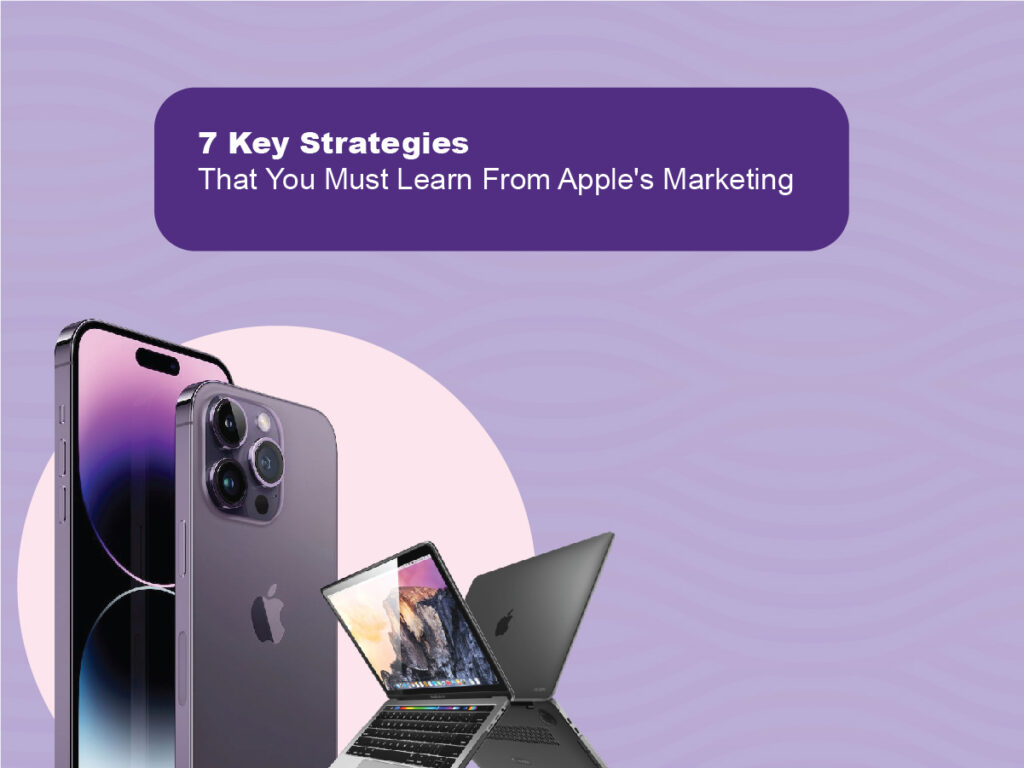
- Understanding the customer
Apple has consistently focused on understanding its customer’s needs and desires. The company has spent tremendous effort and time to understand the market and the changing needs of its customers. Apple meets its customers where they are and ensures that their products genuinely align with their values and lifestyle. The company’s marketing strategy revolves around its customers, with core marketing messages to reinforce the customer’s sense of identity, value, and influence.
- Focusing on customer experience
Apple’s philosophy is that design is not just about aesthetics but also about user experience. The company places tremendous focus on the user experience to charming its customers. It is often said that using an Apple product is not just about using the product but rather an experience. Apple’s products are designed from the ground up with user experience in mind, right from the moment the customer opens the box, switches on the product, and touches the interface.
- Unique value proposition
One of Apple’s essential marketing strategies is its unique value proposition. Apple’s products are not just about the technology but also about the combination of technology, superb design, aesthetics, and excellent user experience. Apple effectively communicates this unique value proposition to its customers, making them willing to pay a premium price for its products.
- Focus on simplicity
Apple has always emphasized simplicity in its design and marketing. Its products are simple yet elegant, which appeals to a larger audience. Apple’s minimalist approach strips away any unnecessary features or complexities, leaving the end product looking clean, sleek, and user-friendly. Apple is known for its clear and concise marketing messages, making it easy for customers to understand what they are getting.
- Advertising and Branding
Apple’s branding is one of the best in the world. The company’s advertising campaigns are often straight to the point, yet creative and memorable. Apple’s advertising and branding strategy is also highly customer-focused, often inspiring customers to be innovative and creative themselves. Apple does not focus on flaunting the latest features like their competitors but rather on how the product can improve the customer’s life.
- Creating an ecosystem
Apple products are designed to integrate, and Apple’s ecosystem enhances its products’ features. Apple’s products connect seamlessly between devices, making the customer’s experience more comfortable and smoother. Apple’s tailored ecosystem cements customer loyalty, making it harder for them to switch to other brands.
- Cultivating a strong community
Apple has succeeded in creating a strong community of customers who are passionate and loyal to the brand. The company understands how essential loyal and engaged consumers are, and as a result, has created initiatives such as Apple forums, Apple music, and app stores to encourage engagement and participation within the community. By fostering a tight-knit community, Apple is creating a more significant impact on its customer’s lives, making it more difficult to switch to other brands.
Apple’s Marketing Strategy to develop its brand
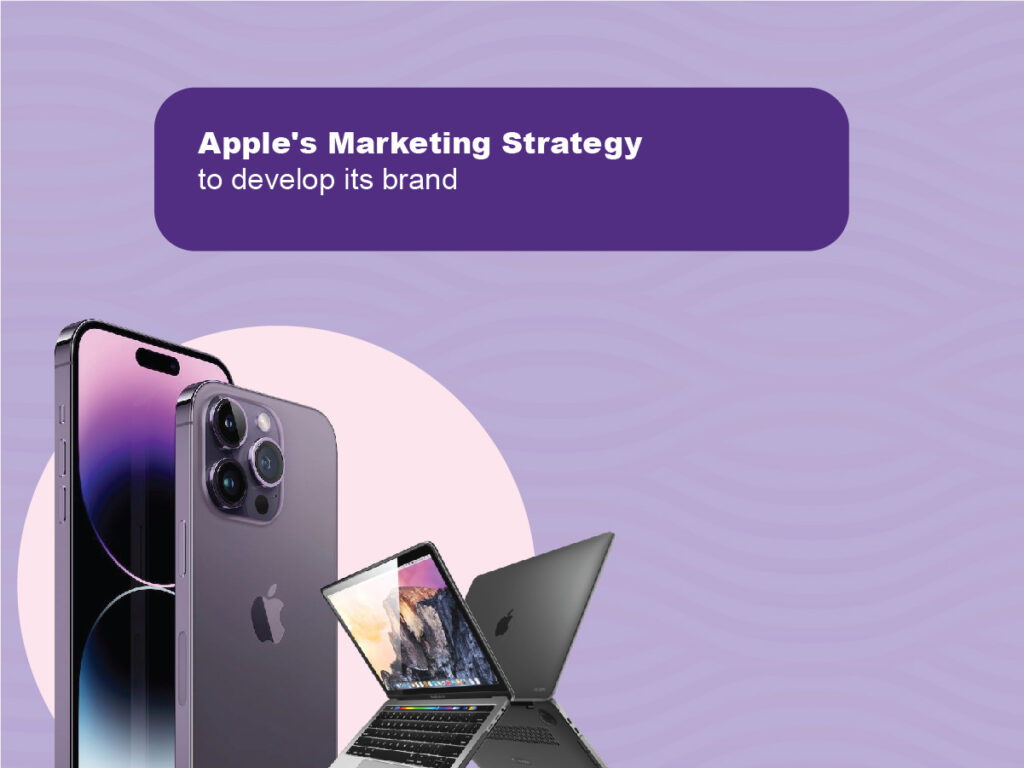
Apple’s marketing strategy has been one of the most successful in the history of technology. From the very beginning, Apple has been known for its focus on innovation and design – qualities that have continued to set it apart from its competitors. But what exactly has Apple done to develop its brand over the years? Here are some of the key strategies that have contributed to Apple’s success:
- Focus on Product Quality
One of the main strategies that has contributed to Apple’s success is its emphasis on quality. From the first Macintosh computer to the latest iPhone, Apple has always placed a premium on quality design and materials. This has helped to build trust and loyalty among customers, who know that they can rely on Apple’s products to deliver a high level of quality and performance.
- Simplify and Streamline
Another key aspect of Apple’s marketing strategy has been its focus on simplicity. Apple products are designed to be intuitive and user-friendly, with a focus on ease of use and a minimalist design. By eliminating unnecessary complexity, Apple has been able to appeal to a wide audience of users, from tech-savvy power users to people who are new to technology.
- Building a Strong Brand Identity
Apple has worked hard to build a strong brand identity that resonates with customers. The company’s iconic logo, sleek design, and simple marketing messages all contribute to a sense of exclusivity and prestige around the Apple brand. By creating a powerful brand identity, Apple has been able to build a loyal following of customers who see owning an Apple product as a status symbol.
Apple’s Marketing Campaigns: Harnessing Popularity and Building Hype

Apple’s marketing strategy isn’t just about developing a strong brand identity – the company has also been incredibly successful at harnessing its popularity and building hype around new products. Here are some of the key marketing campaigns that have contributed to Apple’s success over the years:
- Building Anticipation with Teasers and Pre-Release Hype
Apple has always been great at building hype around new product releases. By teasing new products and releases ahead of time, and building anticipation with limited release dates or exclusive previews, Apple has been able to create a buzz around its products that other companies can only dream of. This helps to build excitement and excitement breeds customer loyalty, creating a self-sustaining cycle of popularity and hype.
- Creating Memorable Advertisements
Apple has also been incredibly successful at creating memorable advertisements that stick with customers. From the “Think Different” ad campaign in the late 1990s to the iconic “Get a Mac” commercials in the late 2000s, Apple has always been able to create ads that are both memorable and effective. These ads have helped to build brand recognition, create emotional connections with customers, and generate word-of-mouth buzz for Apple’s products.
- Creating an Exclusive User Experience
Apple’s products are known for their exclusivity – their designs are sleek, their marketing focused on quality, and their prices often prohibitive. This exclusivity is part of what has made Apple so popular and powerful, as many customers want to be part of the exclusive club of Apple users. Ultimately, Apple’s marketing strategy is about building a brand that people want to be associated with – and creating a sense of exclusivity and desirability around its products.
Apple’s Pricing and Distribution Strategies: Balancing Premium and Accessibility
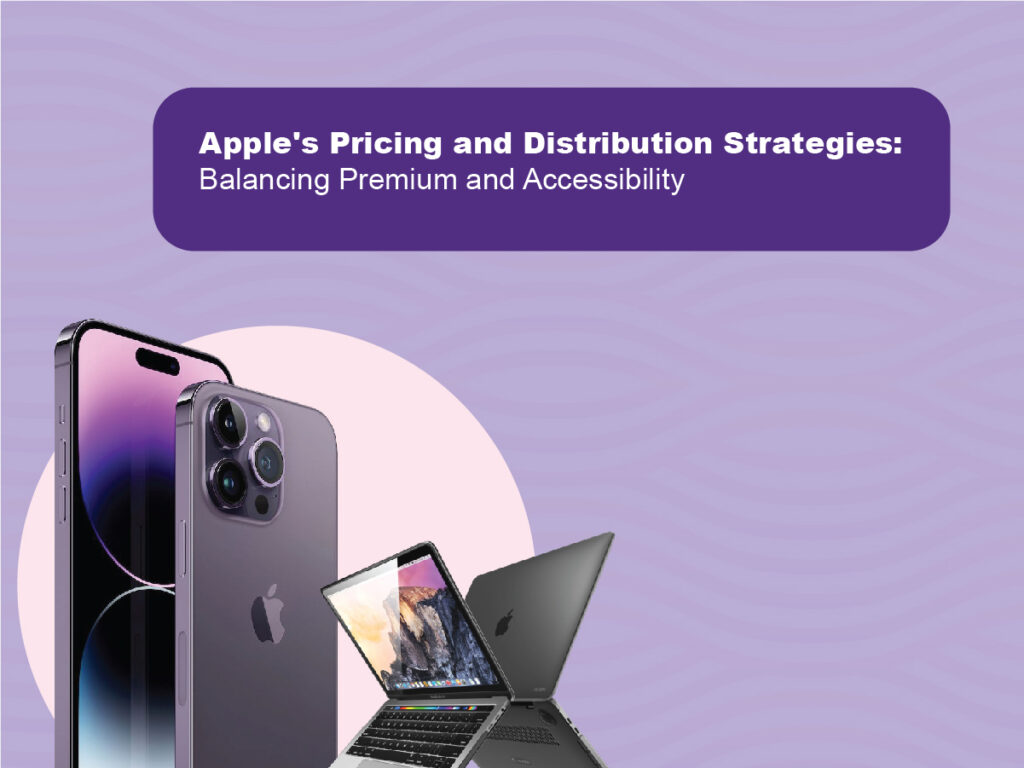
One of the key reasons for Apple’s success is its pricing and distribution strategies. Apple creates a balance between premium and accessibility, which allows them to appeal to a wide range of customers. Apple products are typically more expensive than their competitors, but they provide exceptional quality, design, and features that justify the premium price tag. Apple has mastered the art of positioning its brand as a luxury product without being overtly exclusive. Apple’s products are aspirational, and people are willing to pay a premium to be part of the Apple tribe.
Apple also excels in their distribution strategies. Apple products are sold in their stores, on their website, and through third-party retailers. By having a wide range of distribution channels, Apple can reach consumers across the globe. Apple’s retail stores are a crucial component of their distribution strategy. These stores provide customers with a unique retail experience that is not possible through online shopping. Apple stores employ knowledgeable and friendly staff who are passionate about Apple’s products and provide exceptional customer service. Apple’s retail stores are designed to create a sense of community, with the aim of fostering brand loyalty.
The Role of Innovation in Apple’s Popularity and Power
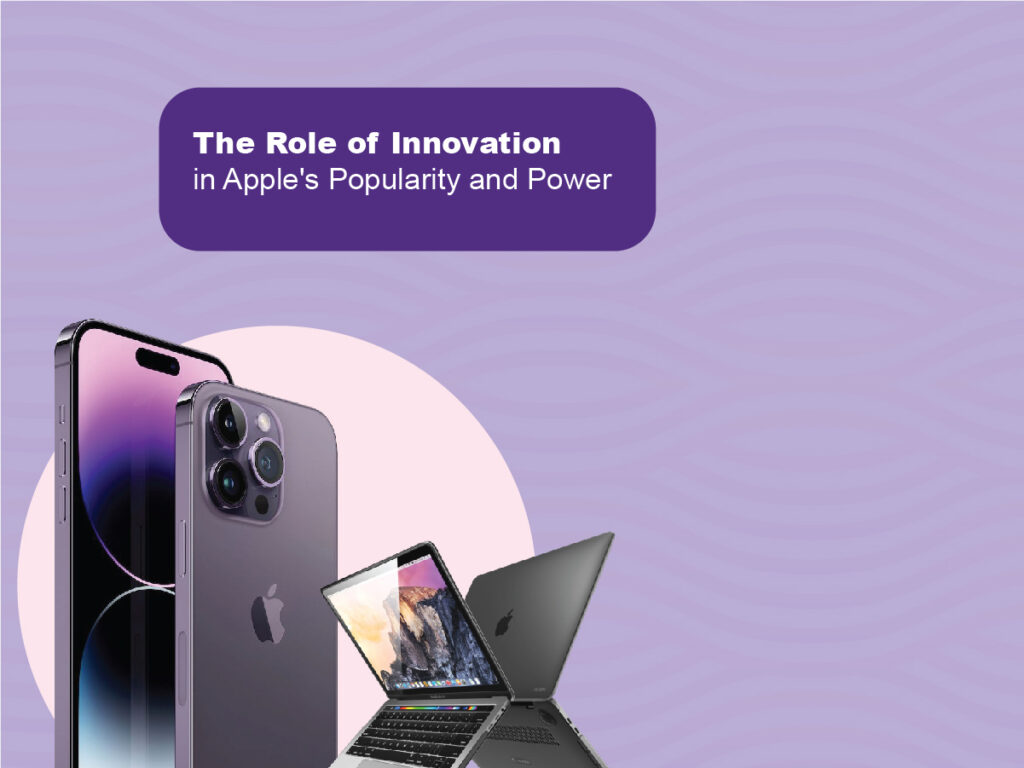
Innovation has always been at the heart of Apple’s success. Apple products are known for their cutting-edge design, features, and functionality. Apple’s ability to innovate and create new products has allowed them to stay ahead of their competitors.
One of the factors behind Apple’s innovation is their design philosophy. Apple’s products are designed to be aesthetically pleasing, easy to use, and highly functional. Apple’s designers pay great attention to detail, and every element of their products is carefully considered. This design philosophy has resulted in iconic products such as the iPhone, MacBook, and iPod.
Apple’s innovation also stems from their commitment to research and development. Apple invests heavily in R&D, with the aim of creating new products and improving existing ones. Apple’s R&D team comprises some of the brightest minds in the industry, and they are given the freedom to explore new technologies and products.
Apple’s innovation is not solely focused on creating new products. They also strive to improve the user experience through software updates and new features. Apple’s software updates are highly anticipated, and their new features often set the standard for the industry.
The Future of Apple: Sustaining Popularity and Power in a Changing Market

Despite Apple’s success, the company cannot afford to rest on its laurels. The company needs to sustain its popularity and power in a rapidly changing market. In recent years, Apple has faced stiff competition from other tech giants such as Samsung and Huawei. The competition is not limited to smartphones; products such as tablets, laptops, and smartwatches are also fiercely contested. Also, the emergence of new technologies such as virtual reality, augmented reality, and internet of things (IoT) presents even greater competition.
One way that Apple can continue to sustain its popularity is by creating products that meet the evolving needs of its customers. The company can achieve this by investing in market research to understand the changing preferences of its customers and designing products that address those needs. For example, the shift towards a more health-conscious lifestyle has led to an increased demand for fitness tracking technologies, which Apple has addressed through the introduction of the Apple Watch.
Another way that Apple can continue to sustain its popularity is by continuing to prioritize innovation. The brand has a reputation for introducing new and unique products, and this can be leveraged to stay ahead of the competition. Apple can achieve this by investing in research and development to create new products that meet the changing needs of its customers and revolutionize the market.
Moreover, Apple needs to broaden its customer base. Historically, Apple has catered to the premium market segment. However, the market is now changing, and Apple needs to adjust its marketing strategy to cater to a high-end mass-market customer. The company needs to cater to a diverse market that includes different income groups.
Conclusion: Key Takeaways and Lessons from Apple’s Success Strategies
In conclusion, Apple’s success can be attributed to its unique marketing strategies, commitment to innovation, and ability to create a strong sense of brand loyalty among its customers. The brand has been able to sustain its popularity and brand power, even in a constantly changing market, by investing in market research and continuing to prioritize innovation.
The key takeaway from Apple’s success is that creating a deep emotional connection with customers is critical to building a strong brand. Apple has achieved this by delivering products that exceed customer expectations, investing in customer service, and creating a sense of community around the brand. To sustain its popularity and brand power, Apple must continue to prioritize user experience and innovation to meet the changing needs of its customers and stay ahead of the competition.




